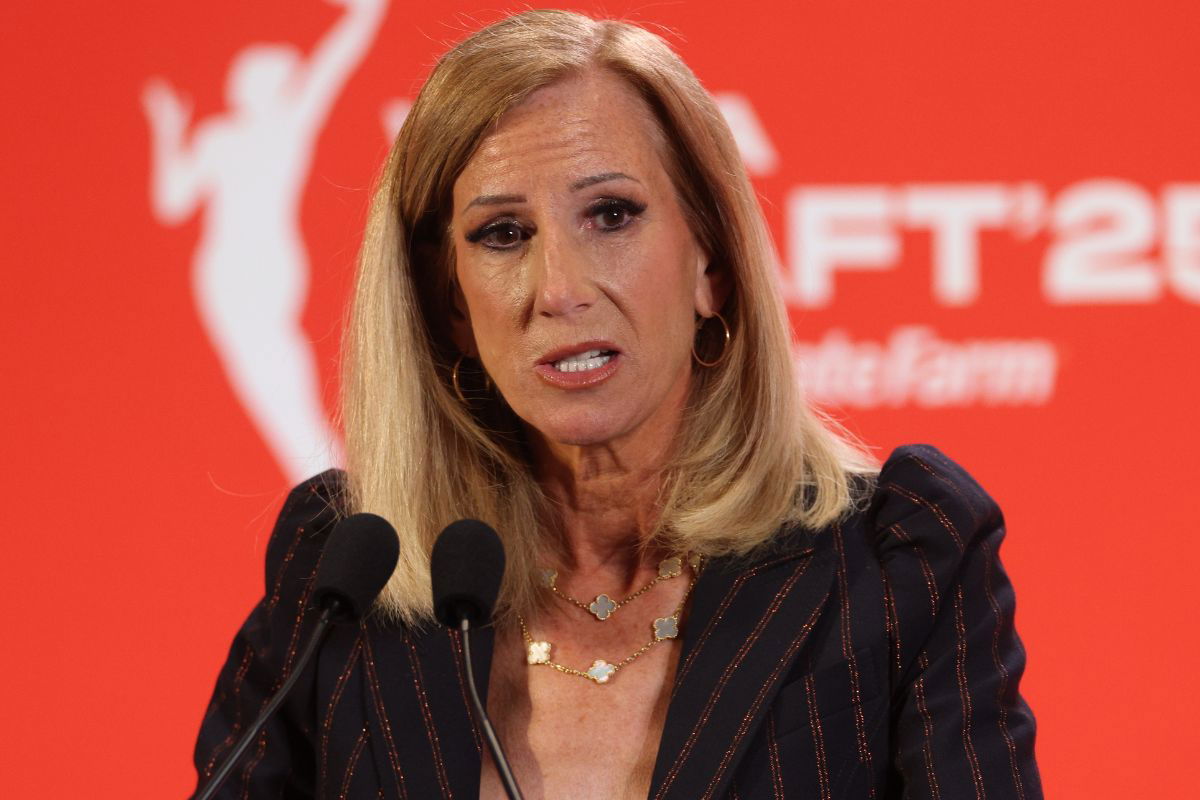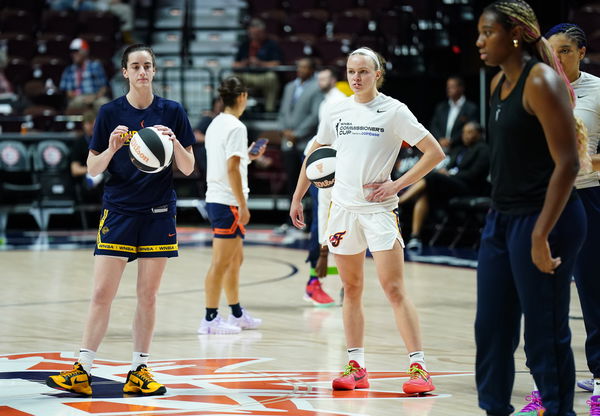
Imago
Credits: Imagn

Imago
Credits: Imagn
It’s about time the WNBA takes a hard look at its schedule, because let’s be honest, it’s not working for everyone. Fans have been sounding the alarm for a while now, calling out the packed format, exhausting travel, and the fact that the season hits full swing during summer, when most major sports are actually slowing down. And it’s not just the fans who feel this way. Even Caitlin Clark, one of the league’s brightest stars, joked last season, “The only downside about the WNBA is (that it’s) during the summer—that’s when you golf.” Sure, she said it playfully, but her words still hit a nerve. Because beneath that lighthearted dig lies a real issue the league can’t afford to keep ignoring.
Well, it’s not WNBA viewership or fans, even WNBA teams are also grappling with scheduling issues for years. And last year was no different. We already knew the intensity we had for the Minnesota Lynx vs the Liberty’s finals game that extended to five matches between the two.
But, for them, it was the travel and schedule that reflected on their games. Just consider they clinched a spot in the finals, and twelve hours later, they took a flight to NY, and then they were at media availability at Barclays Centre. Well, this was just one of those instances, so it makes sense why Stewie wishes to extend the schedule past October 20th. “This is the biggest moment of the season, and it’s going to be condensed into possibly 10 days, you know?” Stewart said.
ADVERTISEMENT
Article continues below this ad
So, the issues had been there from always. But if you see the NBA, it hasn’t been there. Why? The league operated during the traditional fall-spring season and arguably features more polished players. But, the question is why hasn’t the W shifted to the traditional basketball calendar since then?
Today, this choice continues to hurt the league. While NBA players rest or train during summer, approx 50% of the W’s athletes are forced to play overseas during the regular basketball season just to make up for the pay gap. But, you might be thinking, how things have changed post-Clark era.
ADVERTISEMENT
Article continues below this ad

USA Today via Reuters
Jun 10, 2024; Uncasville, Connecticut, USA; Indiana Fever guard Caitlin Clark (22) (left) guard Grace Berger (34) and teammates warm up before the start of the game against the Connecticut Sun at Mohegan Sun Arena. Mandatory Credit: David Butler II-USA TODAY Sports
Top Stories
Chiefs Owner Clark Hunt Makes Big Call on Leaving Missouri As $3B Relocation Looms in Patrick Mahomes Era

Michael Strahan Says ‘Someone Will be Fired’ For Pulling Off FOX NFL Sunday Stunt

Carlos Alcaraz Issues Warning to Jannik Sinner Amid Tough Court Conditions at ATP Finals

Commanders Silent as President Donald Trump Wants $3.7B Washington DC Stadium Named After Him

Carlos Alcaraz Disrespected Before ATP Finals by Italian Crowd in Bizarre Moment

Buccaneers Forced to Cancel Military Ceremonies & Aircraft Flyover for Patriots Game on Sunday

From record-breaking viewership to attendance surges—and even Clark being responsible for 26.5% of the league’s economic activity—the numbers said it all. So, the WNBA took valuable steps and began leaning into Clark’s momentum even more. Eventually, a decision was made to expand the regular season from 40 to 44 games, with the Indiana Fever scheduled to play in 41 of them. “I can definitely see us going to 50 (games),” Cathy Engelbert shared about the league’s expansion process. However, what was supposed to be a reason for fans to flock to the WNBA has ironically driven some away, and for obvious reasons.
When the league announced its expansion, it was an unprecedented jump: from 36 games in 2022 to 40 in 2023, and now 44 in 2025. But what the league failed to consider was the duration of the regular season. Even with 44 games, the season is still set to end by late October. And that has created an obvious mess, which fans are urged to call out for now!
ADVERTISEMENT
Article continues below this ad
Fans call out W’s scheduling for obvious reasons!
As usual, fans were the first ones in the comment section to call out the differences W’s scheduling has. One fan quickly pointed it out and shared her frustration with others: “IMO the league doesn’t have enough teams and a long enough season to justify how it schedules games. Makes it harder on fans to watch and media to actually cover the league. I truly do not understand it,” she wrote.
Honestly, her response makes a lot of sense. Despite having just 13 teams on the roster, the WNBA’s scheduling has been a major concern this season. Not only has the frequency of games increased, but the league has also included back-to-back matchups. This not only leads to player fatigue—potentially affecting performance and increasing the risk of injury—but also makes it tough for fans to keep up with their favorite teams and matchups. Take Saturday’s games, for instance. First, the Atlanta Dream will host the winless Connecticut Sun at 3 PM ET. Then, the Chicago Sky will take the court against the Los Angeles Sparks at 6 PM ET.
And if you think that’s just two games on the same day—think again. At the same time, the Washington Mystics will be facing the Phoenix Mercury, while the Las Vegas Aces search for a much-needed win against the Seattle Storm. There’s simply no way for fans to keep up with all their favorite teams.
As one user put it perfectly: “I don’t understand having four games at the same time either! Like why not have the games start at 1, 3, and 6! At least people can watch 2 at a time lol. I got one on my TV and one on my phone or tablet!”
The sentiment behind this comment is entirely understandable. On Sunday, three games were scheduled at the same time—each bringing compelling storylines that urge fans to watch. But even if viewers want to catch them all, they can’t. They’re forced to choose only one. And, if you’ve followed the WNBA since Day 1 of the 2025 regular season, these three games are must-watch events. But unfortunately, the W’s scheduling makes that impossible.
And, then there’s the competition from the heart of college football and the NFL—something the W should’ve been careful about after last year’s mishap. The WNBA Finals game clashed with a Thursday Night Football matchup, which significantly hurt viewership. Not only that, it can even impact player availability at arenas.
Shared venues with NBA or NHL teams often lead to last-minute schedule changes. That’s what happened with Caitlin Clark’s preseason home debut—the Indiana Fever’s game was moved up a day due to a scheduling conflict with the Pacers’ playoff game. But of course, all these instances could be avoided with better planning.
“The W needs appointment-based scheduling like the NFL,” said another user. They’re right. The NBA runs from October to June, with 82 games played over roughly 174 days, allowing for more rest and flexibility. The NFL, operating from September to February, features just 17 regular-season games over 18 weeks. Even MLB, with its 162-game season from April to October, relies on larger rosters and specialised roles to manage the daily schedule.
On the other hand, the WNBA’s season runs from May to September, 44 games over approximately 115 days. That means teams are playing every 2-3 days. Despite that, the league still ends up stacking three must-watch games at the same time. But why? “Because Cathy isn’t interested in proper coverage of the league. She wants quick cash and racial divides,” claimed another user. The truth is, even with last year’s incredible viewership and economic gains, the league is still expected to report a $50 million loss for the 2024 season. So, the WNBA is doing everything it can to bring fans to the arena—even leaning heavily on narratives like the Caitlin Clark vs. Angel Reese rivalry, something that hasn’t sat well with many players and even the WNBPA. It’s clear the scheduling is geared toward maximizing Clark’s visibility. She’s scheduled to play 41 of the 44 regular-season games. So, while the league is pushing for profitability, at what cost? The WNBA needs to find balance, not just for profits, but for fans, players, and the future of the game.
ADVERTISEMENT
ADVERTISEMENT
ADVERTISEMENT
ADVERTISEMENT

